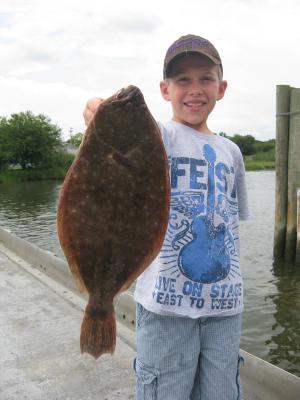Responding to drive-on beach access letters
I was happy to see two letters to the editor in Friday’s Cape Gazette concerning my column on beach access. I have been jealous of Don Flood, who seems to generate letters in every edition, while this is only the second time anyone has felt the necessity of sharing their thoughts about something I wrote.
The first letter expressed concern that allowing people to drive on without fishing during the period from Memorial Day to Labor Day would expand to all year. In my experience, the only folks on the beach in the spring and fall are fishermen. I have never seen the summertime practice of tossing a line in the water and then playing volleyball or swimming during the fall.
He was rightly concerned that the Legislature may never allow the fees collected for surf-fishing permits to go to a dedicated fund for maintaining the beaches. This will be a very large hurdle to overcome, but with the proper support it is possible. The task will be convincing Democrats from upstate to support the idea if it is proposed by Republicans from Sussex County. Of course, Sen. McBride is an upstate Democrat.
Another concern expressed by both letter writers is the impact that allowing people to drive on the beach without fishing will have on the environment. Since the beach is currently populated by hundreds of non-fishermen pretending to fish and my observations indicate they are no less a problem than actual surf fishermen, I don’t see this as a serious situation.
The second letter writer was concerned that all of Delaware beaches would become drive-on accessible. To the best of my knowledge, this has not been proposed, nor will it ever be. You will never see four-wheel-drive vehicles on Rehoboth or Dewey or any beach other than those currently designated as drive-on accessible within the state park system.
He was also concerned that people fishing along a swimming beach presented a danger and should be stopped. Rehoboth tried to ban fishing from town beaches several years ago. The response was swift and decisive. The mayor received hundreds of phone calls opposing the ban, and it was quickly lifted.
I do believe we need a quota system to keep the beach from becoming too crowded. I suspect it would only be needed on summer weekends, but it will take additional personnel to enforce.
Another question that comes to mind is if folks don’t have to fish to drive on the beach, do they have to park next to the water? If they can park next to the dunes, it would open more beach for those who do want to fish.
Driving on the beach has been around for a very long time. The most important thing is keeping the privilege alive and well. There will be individuals and groups that will take this opportunity to try to ban all drive-on access, and these people are the real enemies. I don’t think we can restrict drive-on access to surf fishermen only since we are talking about a public beach supported by everyone’s tax dollars. It is far better to let non-fishermen on than keep everybody off.
Fishing report
Fishing is generally good. It would be hard to go out in the bay or ocean without catching something. It may not be exactly what you want to catch, but it is better than catching nothing.
Flounder are on hard structure over reef sites, and you must learn how to catch them. Just drifting along blindly is not going to put many filets on your dinner plate. You must use your SONAR and GPS to locate structure, then work a bucktail or jig baited with a strip of squid or fish directly on top of the rubble. You will lose plenty of tackle before mastering this technique, and you will still lose some even if you become a master at jigging over structure.
How effective is this technique? Those who know how to do it consistently catch limits of big flounder from reef sites.
Croaker are the go-to fish in the bay and all the tidal tributaries. Bloodworms and clams make the best bait, but they will also hit Gulp! and FishBites. The larger croaker have been in the Lewes and Rehoboth Canal, and around hard structure at the Inner Wall and bay reef sites. Smaller fish are available over open bottom in the bay.
The Old Grounds and the rough bottom between B and A buoys hold good numbers of keeper flounder. The wind and strength of the current play a very important role in fishing this deep water. A two-knot drift is considered by many to be the ideal speed. The right combination to attain this speed does not occur every day.
























































